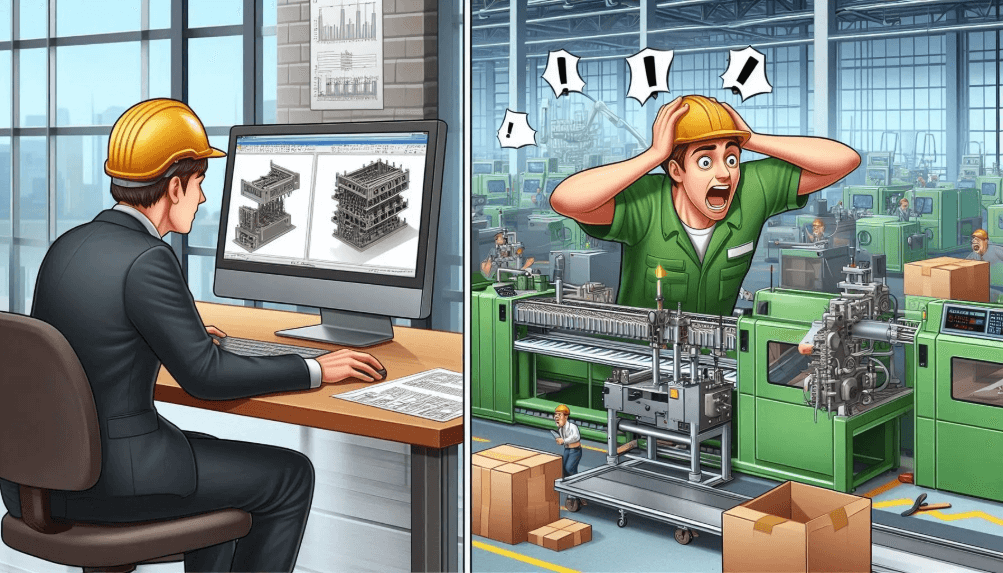August 5, 2025
Community Voice
.png)

Change is the heartbeat of innovation. Yet, in many enterprises, change is still treated as a reactive and siloed activity. Organizations spend billions annually managing change, but too often, that effort leads to inefficiency, rework, and missed opportunities. What if the change process itself could become a strategic enabler of innovation and value creation?
That’s where CM2, the globally recognized standard for enterprise configuration management, comes into the picture. At the heart of CM2 lies the closed-loop change process, a structured and enterprise-wide approach to managing change. But more than just a set of rules or workflows, it is a mindset shift that transforms how organizations take control of complexity and build smarter, more collaborative ways to create and innovate.
In this article, we explore how the CM2 closed-loop change process fuels value creation and drives sustainable innovation across the enterprise.
Traditional change management systems are often plagued by fragmentation. Engineering owns one system, manufacturing another, service another, and facility management yet another. Each team has its own processes, terminologies, and data formats. This siloed approach leads to:
Moreover, change is typically reactive, like a response to defects, customer complaints, or non-conformances. It’s about fixing what’s broken, not enabling what’s possible.
What if a change to the product required field engineers to be retrained? But this was completely missed by the ‘engineering change’ impact analysis.

Or what about a change that required a completely new production facility, but this was discovered after the customer contracts were already signed?
The impact of change often reaches beyond the initial scope or intent of the change. Fragmented change processes that do not have an enterprise-wide wide holistic view on impact analysis will run into these kinds of problems that have to be fixed with a lot of extra effort.
CM2 provides a comprehensive methodology that integrates change throughout the entire organization including the entire product and process lifecycle. Unlike traditional CM approaches, CM2 doesn’t treat change as a product-focused, linear, one-time event. Instead, it views change as part of a dynamic, traceable, and repeatable closed-loop that affects everything in the organization.
At its core, the CM2 closed-loop change process enables organizations to:
Let’s break down the value drivers of CM2’s closed-loop process:
Consider the following examples of organizations that used the CM2 change process to make significant improvements:
More importantly, these companies unlocked a new ability to adapt quickly to customer needs, regulatory shifts, and emerging technologies, all without compromising quality.
The value of CM2’s closed-loop change process lies not only in what it prevents (errors, delays, cost overruns), but in what it enables: collaboration, innovation, scalability, growth, and resilience. That means that configuration management can no longer be treated as an afterthought or be an engineering-only responsibility. Anything you do starts with information you can rely on, regardless of how many changes are being processed. CM2 must be embedded into the fabric of how an organization thinks, builds, and grows.
Leaders who embrace the CM2 approach position their organizations to respond to change not with fear, but with the knowledge that they are in control. They close the loop, not to limit change, but to harness it to unlock innovation and value creation.
So, how do YOU CM2?
Have you implemented CM2? Are you thinking of implementing CM2? CM2 is fit for purpose to tactically solve your pain points one at a time. Don’t be overwhelmed, crawl, walk, run. Feel free to reach out.
Use code Martijn10 for 10% off training—and don’t forget to tell them Martijn sent you 😉.
Copyrights by the Institute for Process Excellence
This article was originally published on ipxhq.com & mdux.net.

Known by his blog moniker MDUX—Martijn is a leading voice in enterprise configuration management and product lifecycle strategy. With over two decades of experience, he blends technical depth with practical insight, championing CM2 principles to drive operational excellence across industries. Through his blog MDUX:The Future of CM, his newsletter, and contributions to platforms like IpX, Martijn has cultivated a vibrant community of professionals by demystifying complex topics like baselines, scalability, and traceability. His writing is known for its clarity, relevance, and ability to spark meaningful dialogue around the evolving role of configuration management in Industry 4.0.

